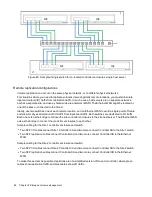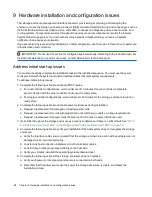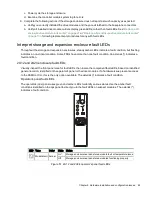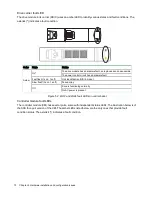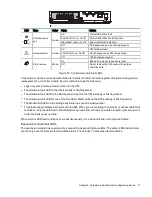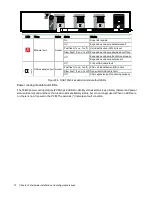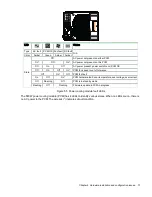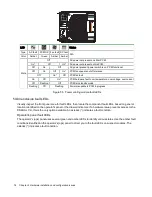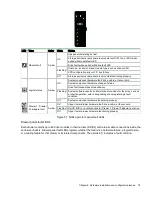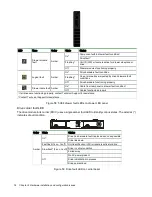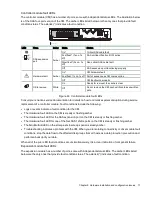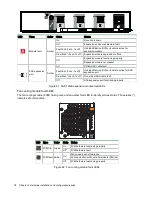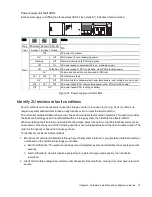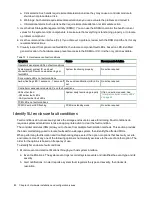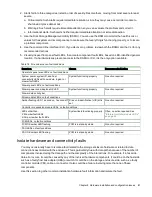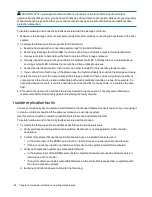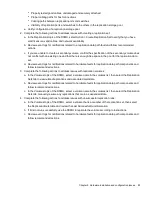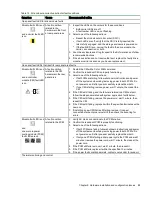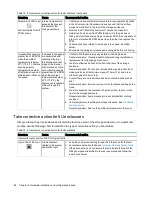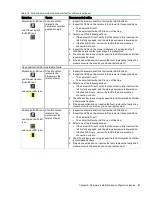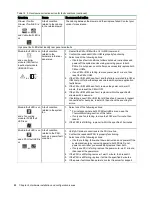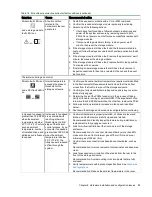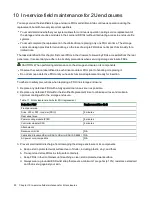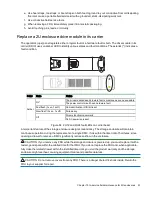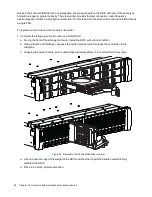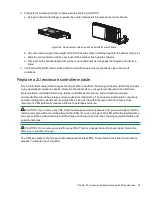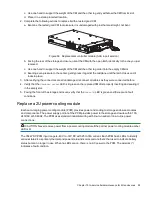
80 Chapter 9 Hardware installation and configuration issues
a. Critical alerts: Such alerts require immediate resolution since they may cause a controller module to
shut down or place data at risk.
b. Warnings: Such alerts require immediate attention so you can evaluate the problem and correct it.
c. Informational alerts: Such alerts neither require immediate attention nor immediate action.
3. Use the Disk Storage Management Utility (DSMU). You can use the DSMU to monitor the health icons or
values for the system and its components, to make sure that everything is functioning properly, or to locate
a problem component.
4. Use the command line interface (CLI). If you discover a problem, review both the DSMU and the CLI for any
recommended actions.
5. Visually inspect front panel area fault LEDs, then locate component fault LEDs, based on LED-identified
general location. If a hardware issue prevents access to the DSMU or CLI, it is the only option available.
Symptom
Cause
Recommended Action
Operator's panel area LEDs, no fault conditions
System power, system ID, and host
connectivity LEDs with no module or logical
fault LEDs
System functioning properly
No action required
Drive module LEDs, no fault conditions
Amber flashing LED: 1 second on, 1 second off Drive unit identification (UID) bit is
set
No action required
Controller or expansion module LEDs, no fault conditions
LEDs other than:
-CM amber fault LEDs
-SAS port amber fault LEDs
System likely functioning properly
Often, no action required. See
"Interpret controller module LEDs"
on page 52
.
PCM LEDs, no fault conditions
PCM OK amber LED flashing
PCM is in standby mode
No action required
Table 13 2U enclosure non-fault conditions
Identify 5U enclosure fault conditions
Fault conditions do not necessarily cause the storage enclosure to cease functioning. Fault conditions do
require a system administrator to take an appropriate action to clear the fault condition.
The controller modules (CMs) allow you to choose from multiple fault isolation methods. This section provides
the basic methodology used to locate faults within a storage system, then identify the affected FRUs.
When performing fault isolation and troubleshooting steps, select the option or options that best suit your site
environment. Use of any one of the following options is not mutually exclusive to the use of another option. The
order for the options is based on frequency of use.
To identify 5U enclosure fault conditions:
1. Monitor event and alert notifications through your host system interface.
a. Event notifications: The system event logs record all system events and identifies the event type and its
severity.
b. Alert notifications: An alert reports a system fault, registers the type and severity, then tracks its
resolution.

